My Top 15 Gangster Films: A Deep Dive into Organized Crime on Screen
Gangster films, a captivating subgenre of crime movies, primarily revolve around the intricate world of organized crime. Their roots can be traced back to the rise of post-19th-century capitalism, where widening wealth disparities fueled the emergence of organized crime cultures. Among these, Mafia films stand out as particularly popular, though the genre’s brilliance extends far beyond them.
As a devoted fan of gangster films, I’m drawn to their portrayal of unique cultures and the darker facets of society. The dramatic rise and fall narratives offer viewers a glimpse into the multifaceted nature of human existence. In this article, I present my personal selection of the 15 most compelling gangster films, each distinguished by its unique style, diverse characters, and rich cultural backdrop.
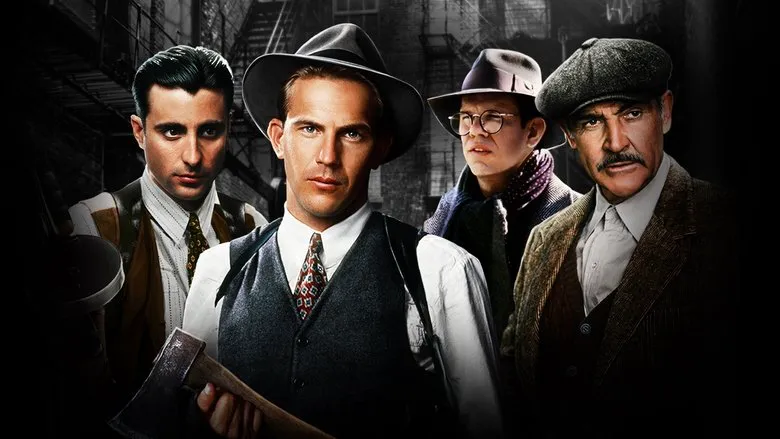
15. Eastern Promises (2007)
Directed by David Cronenberg, known for his body horror films, and starring Viggo Mortensen, Eastern Promises is a gripping Russian Mafia movie. The story centers on Anna, a midwife who delivers the baby of a 14-year-old Russian drug-addicted prostitute and discovers a connection between the Russian Mafia and the girl through her diary.
The film is renowned for its realistic depiction of violence and gore, while also exploring the internal conflict between good and evil, right and wrong, and the fine line between justice and wickedness. Viggo Mortensen’s performance was particularly praised, earning him an Oscar nomination for Best Actor. The memorable scene of his character fighting off assassins in a bathhouse, completely nude and unarmed, is filled with visual and auditory tension. The realistic fight choreography rivals actual MMA matches, giving viewers a visceral sense of street violence. Eastern Promises is exceptional in both its plot and performances, with innovative elements for a gangster film, such as the absence of guns, which paradoxically enhances the raw portrayal of violence. It subverts the desensitization often associated with gun-filled action movies, making it a superior work in the genre.
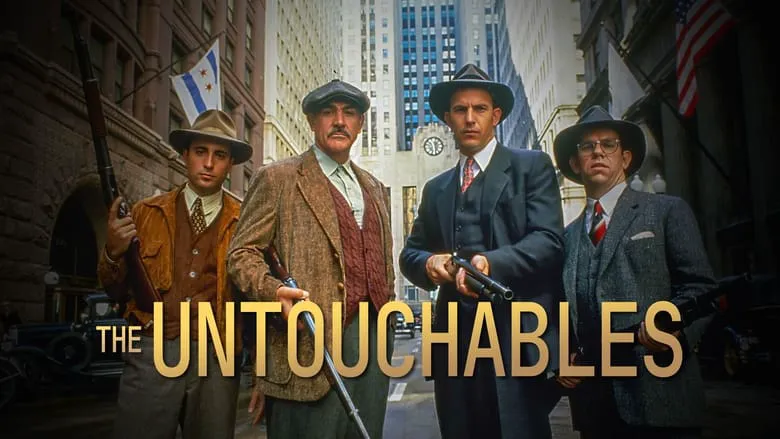
14. Donnie Brasco (1997)
Donnie Brasco, directed by Mike Newell and starring Johnny Depp and Al Pacino, is based on a true story. The film follows Joseph Pistone, an FBI agent who goes undercover in the 1970s, assuming the alias Donnie Brasco. He infiltrates the Bonanno crime family in New York through his association with Lefty Ruggiero.
The film emphasizes character development. Brasco must conceal his identity under immense pressure, especially while carrying recording equipment. He also has to navigate relationships on both sides of the law and strive for advancement. Despite his professional success, his family life crumbles. Lefty, an aging and disillusioned mobster, struggles to gain respect and recognition within the organization, leading him to depend on Brasco. Donnie Brasco is a rare gangster film that balances the perspectives of both law enforcement and criminals, portraying the dark side of these fascinating professions. It focuses on the psychological conflicts and struggles of its characters, making it a captivating watch.
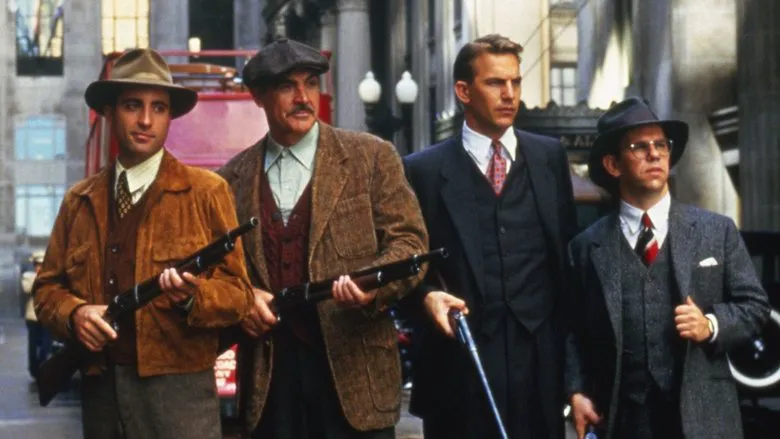
13. Road to Perdition (2002)
Road to Perdition, directed by Sam Mendes after American Beauty, boasts a stellar cast including Tom Hanks, Paul Newman, Daniel Craig, and Jude Law. Set during the Great Depression in 1931, the story follows an Irish mob enforcer who embarks on a revenge mission with his son after his family is murdered by the gang.
This film stands out among gangster movies for its focus on the father-son relationship, rather than the traditional emphasis on a single character or the entire organization. Like Mendes’ other works, the film prioritizes cinematography and the psychological impact of its visuals over plot structure. While characters outside the father-son dynamic are not fully developed, the film’s scenes are mesmerizing, leaving a lasting impression on the viewer. Combined with a beautiful score, it perfectly conveys symbolic imagery. Road to Perdition received six Oscar nominations, ultimately winning Best Cinematography, making it a must-see.
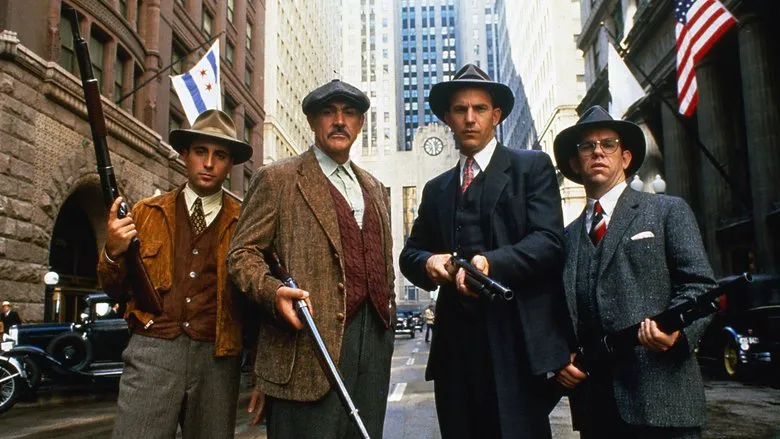
12. The Untouchables (1987)
The Untouchables, directed by Brian De Palma, is based on the novel of the same name, which is inspired by true events. It stars Kevin Costner, Sean Connery, and Robert De Niro. Set in 1930s Chicago, the film depicts the height of Al Capone’s reign, as he controls the bootlegging market through violence. Treasury agent Eliot Ness teams up with veteran cop Jim Malone to assemble a special task force, including a sharpshooter and an accountant, to dismantle Capone’s Chicago crime empire.
The film focuses more on the side of justice, but De Niro’s portrayal of Capone is incredibly vivid. The film is rich in elements, with moments of intense violence balanced by dark humor. The camaraderie among the task force members is both amusing and touching. Notably, Sean Connery delivers a brilliant performance as the tough-but-kindhearted Malone, earning him an Oscar for Best Supporting Actor and revitalizing his career after his legendary run as James Bond.
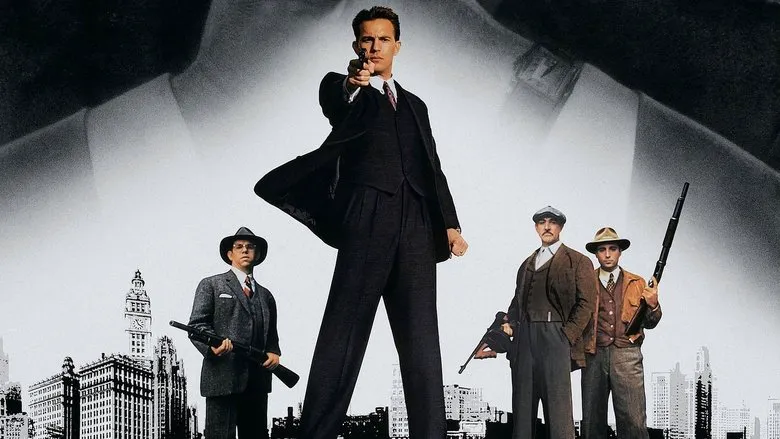
11. The Departed (2006)
The Departed, directed by Martin Scorsese, is an adaptation of the Hong Kong film Infernal Affairs, directed by Andrew Lau and Alan Mak. It stars Leonardo DiCaprio, Matt Damon, Jack Nicholson, and Mark Wahlberg. The story takes place in Boston, where the Irish mob boss plants a mole in the Massachusetts State Police, while the police send an undercover officer into the Irish mob.
The film is quite similar to the original Infernal Affairs, and the debate over which is superior continues. Many consider The Departed to be one of Scorsese’s best works, alongside Taxi Driver in the 70s, Raging Bull in the 80s, and Goodfellas in the 90s. The story structure is impeccable, with outstanding editing and music. The performances are also highly praised, especially Jack Nicholson’s, which many consider one of the best of his career. The film won six Oscars, including Best Picture and Best Director. However, in my opinion, while the film is nearly perfect in every aspect, it leans more towards a crime thriller than a gangster film, similar to The Untouchables, which prevents it from ranking in my top 10.
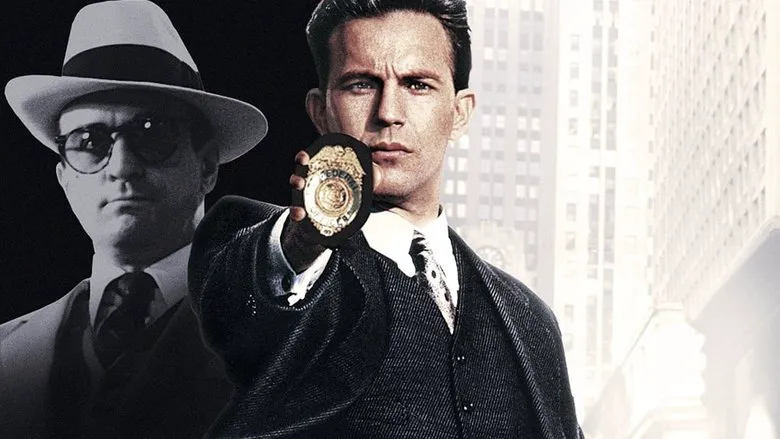
10. City of God (2002)
City of God is a Brazilian crime film directed by Fernando Meirelles and Kátia Lund, adapted from the novel of the same name, which is partially based on real events. The film depicts the rampant organized crime in the favelas of Rio de Janeiro in the 1960s, with widespread robbery, murder, arson, rape, and extortion. The story is told through the eyes of a photographer who documents his experiences growing up in the slums.
City of God is highly acclaimed, receiving four Oscar nominations and being ranked among the greatest films of all time by Time and Empire magazines. The film realistically portrays the chaos and violence of the favelas, chronicling the vicious cycle of a distorted society from the perspective of its young protagonist. Many scenes and stories are both appalling and heartbreaking. City of God offers perhaps the most profound impact among gangster films, removing the commercial veneer and softening filters to expose the raw and ugly reality of a dark world far removed from the reach of law.
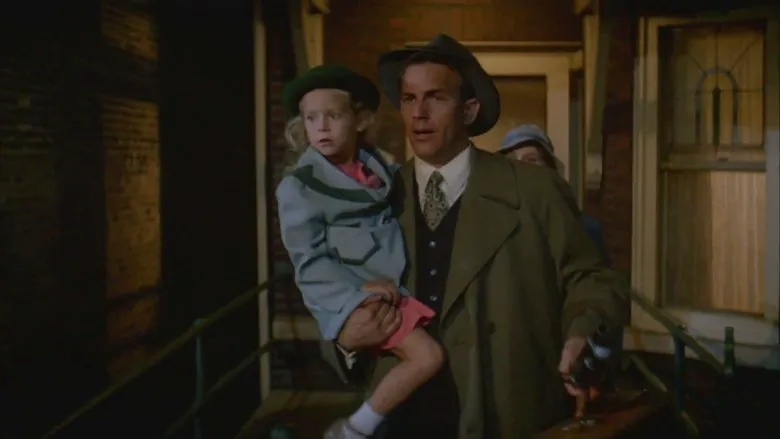
9. Pulp Fiction (1994)
Pulp Fiction, directed by Quentin Tarantino and starring John Travolta, Samuel L. Jackson, Bruce Willis, Uma Thurman, Harvey Keitel, and Tim Roth, consists of three seemingly unrelated but interconnected stories. This film is one of the most famous movies ever made, with a profound impact on popular culture. With its innovative script structure, diverse characters, humorous plot, and violent aesthetics, it is undoubtedly one of the finest neo-noir films.
Initially, I hesitated to include this film in my list of gangster movies, as it is often categorized as a black comedy. However, given its alignment with the definition of a gangster film and its undeniable greatness and significance, I decided to place it at number 9. Purely based on cinematic importance, Pulp Fiction deserves a higher ranking, but as a gangster film, it lacks the purity I seek.
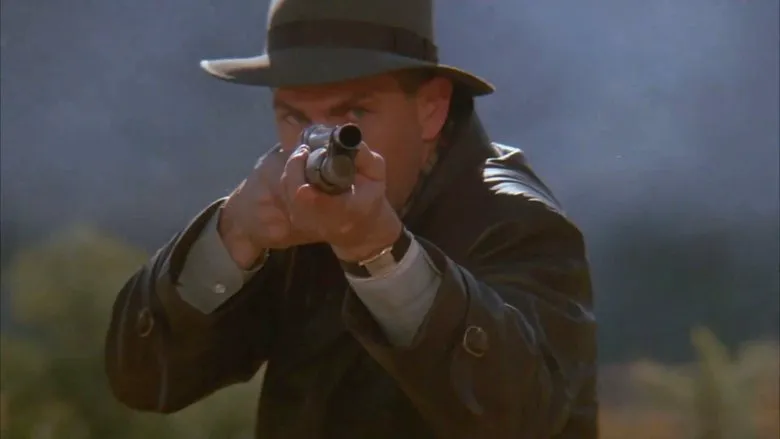
8. Casino (1995)
Casino, directed by Martin Scorsese and starring Robert De Niro, Joe Pesci, and Sharon Stone, is based on the non-fiction book Casino: Love and Honor in Las Vegas. The plot revolves around a top Jewish gambling expert who is hired by the Italian Mafia to oversee a casino in Las Vegas, and the events that unfold.
This film is similar to Scorsese’s Goodfellas, released five years earlier, but it has not received the same level of acclaim. The plot is compelling, and Joe Pesci’s performance is just as brilliant as in Goodfellas. Sharon Stone’s portrayal of the cunning and selfish wife is particularly memorable, showcasing a captivating blend of cold charm and avarice. Watching this film is a thoroughly enjoyable experience, with its suspenseful plot, distinctive characters, seamless integration of music, and surprising details, making it a top-notch gangster film.

7. Reservoir Dogs (1992)
Reservoir Dogs is Quentin Tarantino’s debut film, starring Harvey Keitel, Steve Buscemi, Michael Madsen, and Tim Roth. The story revolves around a group of criminals who, after a failed jewelry heist, begin to suspect a rat among them, leading to various conflicts.
This film is one of the most successful independent films in history, praised by many critics. It incorporates elements from classic films, such as the severed ear, a homage to David Lynch, the bathroom murder scene reminiscent of Psycho, and the non-linear narrative similar to Rashomon. In essence, the film uses extremely violent scenes to showcase a deeper layer of black humor. Tarantino’s script is exceptionally well-written, especially the non-linear arrangement that keeps viewers engaged. It offers a glimpse into Tarantino’s purest style.

6. The Irishman (2019)
The Irishman, directed by Martin Scorsese and starring Robert De Niro, Al Pacino, and Joe Pesci, is based on Charles Brandt’s memoir I Heard You Paint Houses. The story follows Frank Sheeran, a truck driver who becomes involved with the Bufalino crime family and works for Jimmy Hoffa, the head of the International Brotherhood of Teamsters, exploring their complex relationships.
This film is Scorsese’s longest and most expensive to date. Over the course of three and a half hours, viewers are treated to a seemingly mundane recollection of events, punctuated by moments of intense drama. Unlike typical gangster films, The Irishman lacks a dramatic plot or memorable violent scenes, but it excels in its character development. To appreciate the film, viewers must try to empathize with Frank Sheeran, experiencing his profound loneliness and the painful struggles within his conflicting relationships. The Irishman is like a fine whiskey, eschewing strong flavors in favor of a slow, immersive experience, with its impeccable execution of every element compensating for the subdued plot, allowing viewers to deeply connect with Sheeran’s profound solitude.

5. Scarface (1983)
Scarface, directed by Brian De Palma and starring Al Pacino and Michelle Pfeiffer, is a remake of the 1932 film of the same name. The story follows Tony Montana, a Cuban refugee who flees to America after Castro’s rise to power. Driven by ambition and ferocity, he gradually builds his drug empire.
Initially, the film received mixed reviews, with criticism directed at its portrayal of Cuban immigrants and its excessive violence. However, it has since been re-evaluated and is now considered a classic gangster film. Scarface expanded the boundaries of commercial cinema at the time, with its realistic and violent depiction of violence, and its shocking allusions to incest. Al Pacino’s performance is outstanding, perfectly embodying the volatile Montana. The final scene, with the iconic line “Say hello to my little friend!” has become one of the most famous in film history. We witness Montana’s rise to the top through his ambition and selfishness, and his subsequent downfall, a testament to the cyclical nature of life and the consequences of one’s actions.

4. Once Upon a Time in America (1984)
Once Upon a Time in America is an epic crime film about Italian-American gangsters, directed by Sergio Leone and starring Robert De Niro, Joe Pesci, and James Woods. Set in the Jewish community of New York, the story follows a group of boys who grow up to become powerful gangsters.
The film’s most distinctive feature is its non-linear narrative, which divides the story into three timelines: youth, middle age, and old age. These timelines are interwoven throughout the three-and-a-half-hour film. The film revolves around the protagonist, Noodles, and the city of New York, showcasing his journey and the city’s evolution over time. Once Upon a Time in America is perhaps the most comprehensive gangster film, encompassing a wide range of themes. It explores not only the characters’ life experiences but also themes of friendship, love, lust, greed, betrayal, loss, and regret, fully capturing the most intense emotions of life. In addition to its rich story and non-linear structure, the film’s costume design and music are also noteworthy, making it a classic with a high level of overall execution.

3. Goodfellas (1990)
Goodfellas, directed by Martin Scorsese and starring Ray Liotta, Robert De Niro, and Joe Pesci, is based on a true story. The film tells the story of Henry Hill and his friends’ rise and fall in the Mafia from 1955 to 1980.
The film excels in every aspect, with a plot that is both suspenseful and realistic, unique camerawork, flawless acting, skillful use of light and shadow, perfect music, distinctive costume design, and impeccable editing. Goodfellas is undeniably one of the most classic gangster films and one of Martin Scorsese’s best works. As it is based on a true story, it is arguably the most realistic gangster film, with many details adding to its authenticity. The first-person narration provides insight into the unique values and lifestyles of Mafia members. Scorsese does not romanticize or downplay the facts to create a heroic narrative, but rather focuses on the greed, ruthlessness, arrogance, and pride of the members, as well as the corrupt social atmosphere and the influence of the Mafia. Goodfellas contrasts with the heroic Godfather series. While The Godfather inspires fascination and admiration for the Mafia, Goodfellas evokes fear and aversion.

2. The Godfather Part II (1974)
The Godfather Part II, directed by Francis Ford Coppola and starring Al Pacino, Robert De Niro, Robert Duvall, and Diane Keaton, is a sequel to The Godfather, based on Mario Puzo’s novel of the same name. Released two years after The Godfather, the film tells the story of Michael Corleone’s expansion of the family business after the death of his father, interweaving the backstory of Vito Corleone’s rise to power.
This film maintains the high quality of the first film, with stunning cinematography and outstanding performances. Some fans consider The Godfather Part II to surpass the original, reaching new heights. The dual narrative, with the inclusion of Vito Corleone’s origin story, makes the plot more compelling than the linear narrative of the first film. The plot of both films is equally brilliant, with The Godfather perhaps having slightly more tension, while The Godfather Part II focuses more on the contrast between Michael and Vito Corleone. Both films are among the greatest in cinematic history, and their perfection cannot be fully captured in a few words.

1. The Godfather (1972)
If you haven’t already, I encourage you to read my previous review of The Godfather, as its significance cannot be fully expressed in a single paragraph. I have chosen to place The Godfather ahead of The Godfather Part II due to its irreplaceable sacredness in my mind. Moreover, there would be no The Godfather Part II without The Godfather. The relationship between the two films is like the contrast between Vito and Michael Corleone, each with its own supporters and unique strengths. However, I believe everyone agrees that the success of both films, like Vito and Michael, is a perfect generational transition.